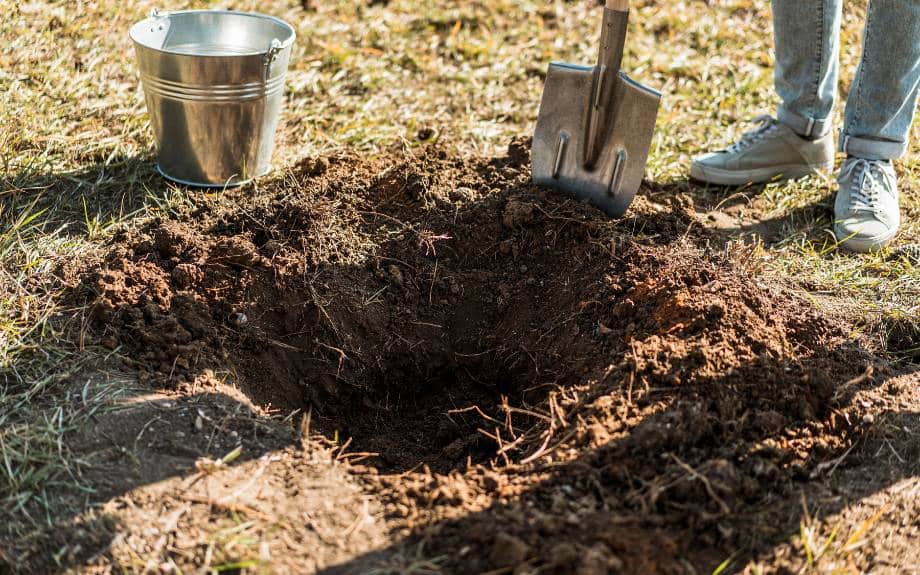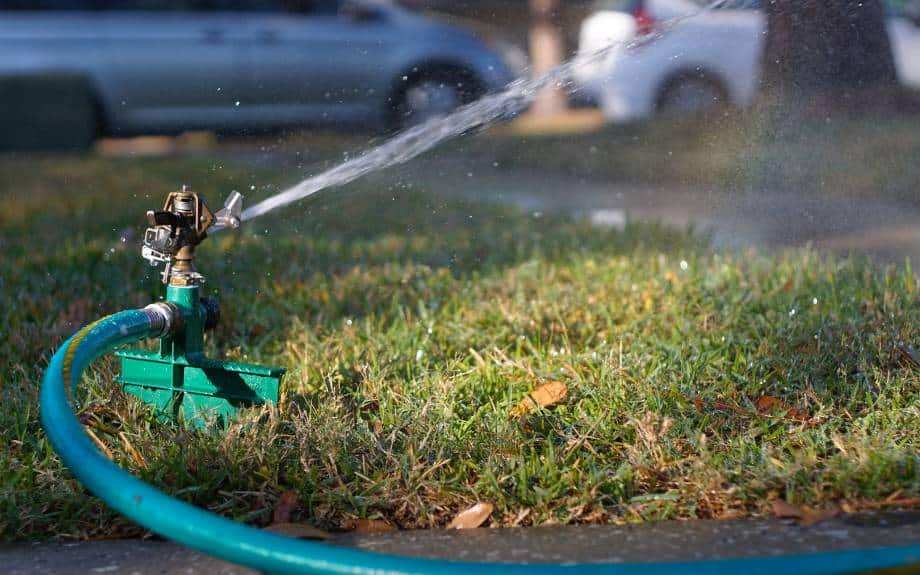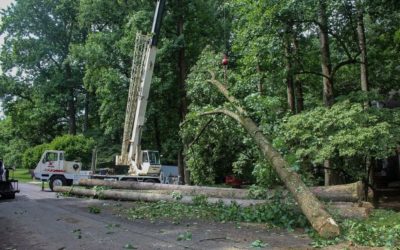Blog Topics
Do you want to plant new trees but aren’t sure how to do it properly? Maybe you planted a tree in the past and it didn’t take off the way you expected. Maybe you’re wondering about the proper way to care for a new tree. Maybe you have no idea where to start!
Well, if this sounds like you, we’re here to help. This article will help you achieve tree-planting success by discussing:
- Choosing the Right Tree for Northern Virginia’s Climate
- Preparing the Planting Site
- Proper Planting Technique
- Watering and Mulching
Ready to begin your planting journey? Let’s go!
Key Takeaways
- Consider the hardiness zone when choosing a tree species for Northern Virginia’s climate.
- Prepare the planting site by clearing away debris and weeds, digging a wide and shallow hole, and amending the soil with organic matter.
- Properly plant the tree by placing it in a hole at the same depth as it was in the container, backfilling the hole, and watering thoroughly.
- Water deeply and regularly, use efficient watering methods, and monitor soil moisture to ensure proper tree growth.

Virginia’s hardiness zones vary across the state, so be sure to take note of the hardiness zone of your region before you choose which trees to plant.
1. Choose the Right Tree Species for Northern Virginia’s Climate
When choosing the right tree species for Northern Virginia’s climate, it’s important to consider factors such as temperature, precipitation, and soil conditions.
Northern Virginia has a humid subtropical climate, characterized by hot and humid summers, and mild to cold winters, and a plant hardiness zone ranging from 6b to 7b. The hardiness zone dictates which plants and trees grow best in the Northern Virginia climate. Plants in these hardiness zones can tolerate low temperatures of just below freezing 96b) to about 10 degrees Celsius (7b).
Precipitation is another crucial factor to consider. Northern Virginia receives just over 38 inches of precipitation throughout the year, which can vary depending on the season. Trees that are adapted to this type of climate, such as the Eastern Redbud and the White Oak for example, are more likely to thrive in the region. These species and others have developed mechanisms to efficiently absorb and retain water, making them well-suited to the area’s precipitation patterns.
Soil conditions are another factor that plays a vital role in determining the success of tree planting in Northern Virginia. The region’s soil is typically a mix of clay, loam, and sandy soils. It’s important to choose tree species that are well-suited to these soil types, as they will have an easier time establishing their root systems.
Taken all together, the Northern Virginia climate is ideal for a variety of tree species that can thrive in these conditions, including:
- Northern Red Oak
- White oak
- Flowering Dogwood
- Eastern Redbud
- Magnolia
- Sugar Maple
- Red Maple
This is by no means an exhaustive list of trees that grow well in Northern Virginia, but by choosing trees that are well-adapted to the local climate, homeowners can ensure the successful growth and long-term health of their trees.

Digging the right-sized hole for your new tree is a crucial part of proper planting.
2. Preparing the Tree Planting Site
Planting a tree is more than just digging a hole. Here are three important steps to follow when preparing the planting site:
- Dig the Hole. Start by digging a hole that is wide and shallow. The hole should be at least twice as wide as the tree’s root ball and just as deep. This will give the roots plenty of room to spread out and establish themselves.
- Loosen the Soil. Once the hole is dug, use a garden fork or a shovel to loosen the soil around the edges. This will help the roots penetrate the soil more easily and encourage healthy growth. Be careful not to compact the soil too much when digging the hole.
- Amend the Soil. Before planting the tree, it’s important to amend the soil with organic matter such as compost or well-rotted manure. This will improve the soil’s fertility and drainage, providing a nutrient-rich environment for the tree to thrive. Mix the organic matter with the existing soil and backfill the hole, making sure to gently firm the soil around the roots.
By following these steps, you’ll create an optimal planting site for your tree to flourish in Fairfax and Loudon counties. Properly preparing the planting site gives your tree the best chance of success and ensures its long-term growth and health.
3. Properly Plant the Tree
Once you’ve prepared the site, make sure you properly plant your tree by following these steps:
- First, dig a hole that is two to three times wider than the tree’s root ball, but only as deep as the root ball itself. This will allow the roots to spread out easily and establish themselves in the soil.
- Next, carefully remove the tree from its container or burlap sack, being sure not to damage the roots. Gently loosen any tightly packed soil around the root ball, as this will encourage the roots to grow outward.
- Place the tree in the hole, making sure that it is planted at the same depth it was in the container or sack. The top of the root ball should be level with the surrounding soil. Backfill the hole with the soil you removed, tamping it down gently to remove any air pockets.
- Lastly, install a tree stake if necessary. This will provide support for the young tree until its roots are established. Use two wooden stakes placed on opposite sides of the tree and secure the tree to the stakes with flexible tree ties. Be careful not to tie the tree too tightly, as this can restrict growth.
By properly planting your tree, you are giving it the best chance to thrive and contribute to the beauty and health of your landscape.
Looking for more information on proper planting? The Virginia Department of Forestry has a great article about it here!

Proper watering is an important part of helping your new tree get established.
4. Water and Mulch for Successful Tree Planting
After properly planting the tree, it’s important to water and mulch it to ensure its growth and health. Watering and mulching are crucial steps in the tree care process, as they provide the necessary moisture and protection for the tree’s roots. While mulching isn’t mandatory for newly planted trees, it has numerous benefits.
To effectively water the tree, follow these tips:
- Water deeply: Give the tree a slow, deep watering to encourage the roots to grow downwards. This helps establish a strong foundation for the tree.
- Water regularly: Trees need consistent moisture, especially during the first few years of growth. Water the tree at least once a week, adjusting the frequency based on rainfall and temperature.
- Use a soaker hose or drip irrigation: These methods allow water to seep slowly into the soil, ensuring thorough hydration without wasting water.
- Water in the morning: It’s best to water the tree early in the morning when temperatures are cooler. This allows the tree to absorb the moisture before the heat of the day.
- Monitor soil moisture: Check the soil moisture regularly by sticking your finger into the soil. If it feels dry up to your first knuckle, it’s time to water the tree.
Mulching your newly planted tree is optional, but it has several benefits:
- Mulching conserves moisture. Mulch helps retain soil moisture by reducing evaporation. This is especially important during the hot summer months.
- Mulching suppresses weeds. A layer of mulch prevents weed growth, which can compete with the tree for water and nutrients.
- Mulch insulates roots. Mulch acts as a protective barrier, insulating the tree’s roots from extreme temperatures.
- Mulching prevents soil compaction. By placing mulch around the tree, you discourage foot traffic near the roots, preventing soil compaction.
- Mulch adds organic matter. As the mulch breaks down, it enriches the soil with organic matter, improving its fertility and structure.
By following these watering and mulching practices, you can ensure the proper growth and health of your newly planted tree in Northern Virginia.
Frequently Asked Questions
How often should I prune my newly planted tree?
Pruning newly planted trees in Northern Virginia should be done sparingly. It’s important to allow the tree to establish itself before any major pruning. Typically, you should wait at least one year after planting before pruning. This allows the tree to develop a strong root system and adjust to its new environment.
However, minor pruning to remove dead or damaged branches can be done as needed. Remember, proper pruning techniques and timing are crucial for the tree’s health and growth.
What are some common pests and diseases that affect trees in Northern Virginia?
Common pests and diseases that affect trees in Northern Virginia include the emerald ash borer, which attacks ash trees, and the gypsy moth, which feeds on a variety of tree species.
Other pests to watch out for include aphids, spider mites, and tent caterpillars. Diseases such as Dutch elm disease and oak wilt can also be problematic.
It is important to regularly inspect trees for signs of infestation or disease and take appropriate measures to mitigate the issue.
Can I transplant a tree from one location to another in my yard?
Yes, trees can be successfully transplanted from one location to another in a yard. However, it requires careful planning and execution.
The tree should be dug up with as much of the root ball intact as possible and then promptly replanted in its new location.
It is crucial to provide the transplanted tree with proper care, including regular watering and monitoring for any signs of stress or disease.
How long does it take for a newly planted tree to establish its roots?
It typically takes a newly planted tree about 1 to 2 years to establish its roots. During this time, the tree focuses on growing its root system to support its above-ground growth.
Adequate watering, proper mulching, and regular maintenance are important for promoting root development and ensuring the tree’s long-term health.
Are there any specific regulations or permits required for tree planting in Northern Virginia?
Specific regulations or permits for tree planting in Northern Virginia vary depending on the location and circumstances. It is advisable to contact the local government or relevant authorities to inquire about any specific requirements.
While the State of Virginia doesn’t have an explicit law regarding tree planting, your local municipality may have guidelines regarding tree species, planting locations, and permits needed, so make yourself aware of the rules in your jurisdiction.
Need Help with Your Trees?
Call Riverbend Tree Service today at 703-402-9366! Our expert team includes certified arborists and has the skill and experience you want to handle any tree project you have including tree health management services to ensure your newly planted trees thrive!
We proudly serve Fairfax and Loudon counties, as well as parts of Arlington, Virginia, Maryland, and Washington D.C.
Give Us a Call at 703-402-9366
If you'd like help with your trees or landscape, have any questions, or would like to schedule an appointment with one of our Certified Arborists, please give us a call. We'd love to hear from you!



